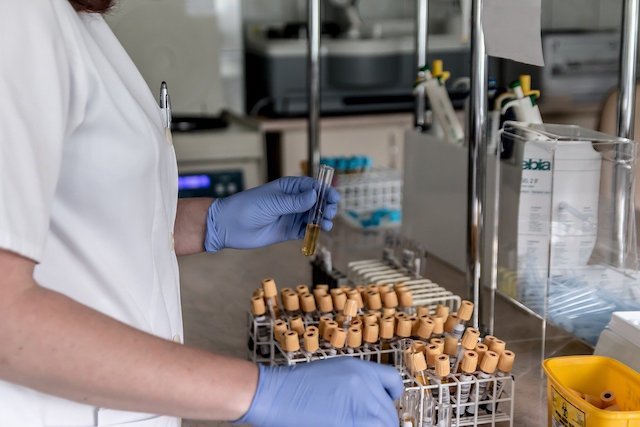
In a new study, researchers found that there may be a way to know when cancer-prone cells will turn into full-blown cancer.
It may become possible for biomarkers in the blood to reveal whether mutated cells have turned a corner toward forming tumors, and how long the process—depending on the type of cancer—is likely to take.
That could give patients a sense of the risk they face before they become ill.
The research was conducted by a team at Rice University.
In the study, the researchers directed their theoretical expertise in modeling random (stochastic) processes to the problem of why cancerous cells that are usually destroyed by the body’s immune system sometimes overcome a gauntlet of defenses to become tumors.
They are intended to clarify microscopic aspects of cancer initiation, the point at which random mutations become “fixed” in cells, which pass them on and eventually overwhelm tissue.
As part of their study, the researchers calculated fixation probabilities for 28 types of cancer to see how they correlate with available clinical data on cancer lifetime risks—and found that correlation was anything but sure.
They argue their “convenient, simple, and versatile” method to evaluate cancer initiation dynamics should incorporate initiation dynamics for specific cancer types as well as established lifetime risks.
Based on their formulas, the researchers developed a chart correlating lifetime risks and initiation times for 28 types of cancer—and found very little to connect the two.
It indicates that cancer lifetime risks alone cannot be utilized to evaluate the danger of getting cancer.
For example, the chart shows that colorectal adenocarcinoma with FAP carries the highest lifetime risk, but its fixation time of 15 years is nearly three times that of duodenum adenocarcinoma with FAP, which is thought to have a much lower lifetime risk.
At the other end of the fixation scale are hepatocellular carcinomas, at more than 31,000 years.
Their calculations compared the “fitness” of individual cells with cancer-related mutations to normal cells without, and how fast they divided.
Tissue with mutant cells that divided at a 1-to-1 ratio with normal cells was the slowest to “fix” tumors.
The researchers assumed mutant cells with a speed advantage would fix tumors faster, and they were right.
But they were surprised when their models showed cells with disadvantageous mutations (slower-than-normal division) were also occasionally faster than normal cells to fix.
Mutant cells that release biomarkers to the bloodstream may provide a better way to spot precancerous conditions.
The team says the model will certainly improve as more relevant parameters are incorporated. But anything it produces now and in the future should not deter one from a healthy lifestyle.
The lead author of the study is Anatoly Kolomeisky, a professor of chemistry and chair of the department.
The study is published in Scientific Reports.
Copyright © 2019 Knowridge Science Report. All rights reserved.



